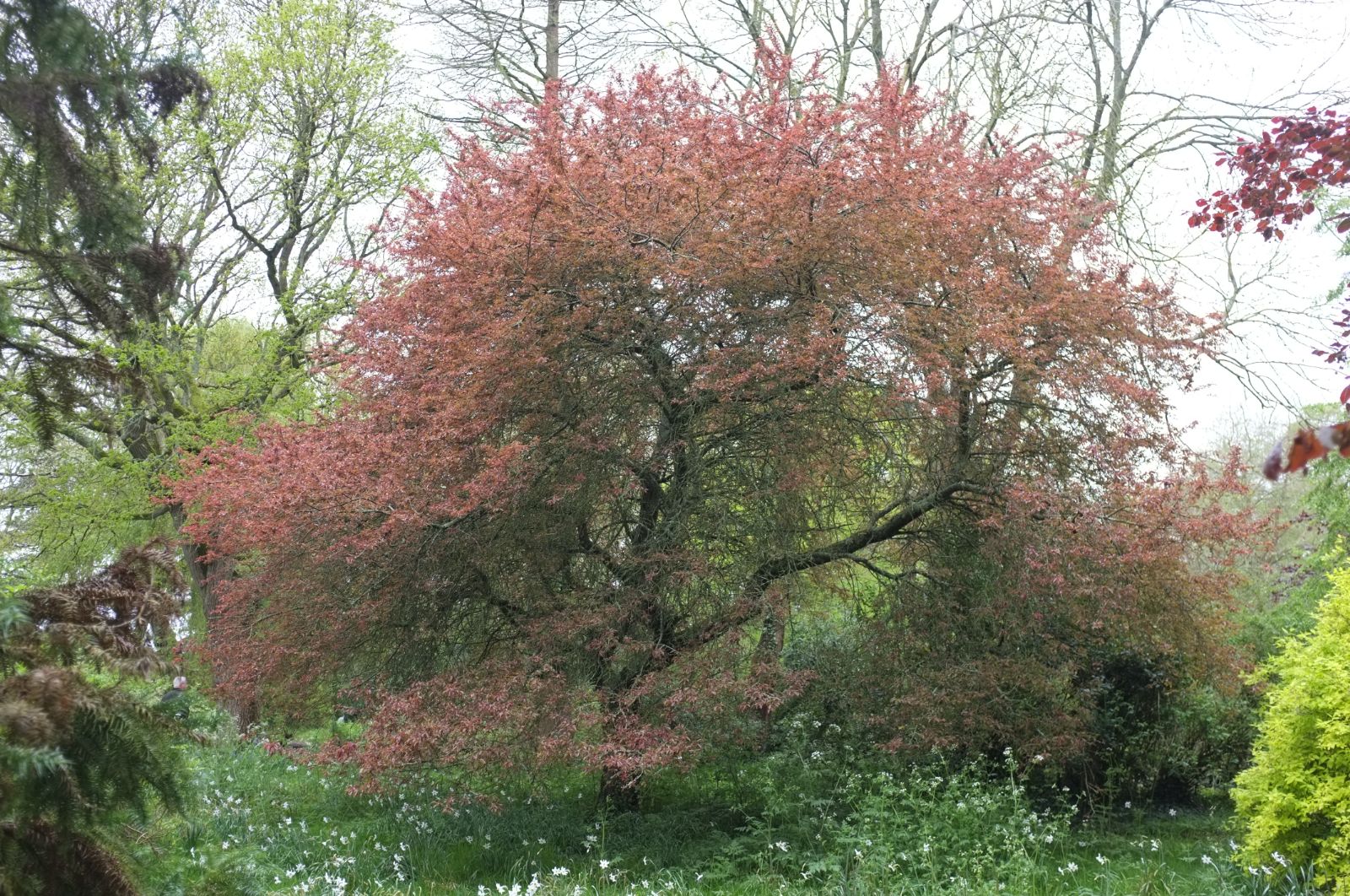Prunus cerasifera
Credits
Article from Bean's Trees and Shrubs Hardy in the British Isles
Recommended citation
'Prunus cerasifera' from the website Trees and Shrubs Online (treesandshrubsonline.
Infraspecifics
Other taxa in genus
- Prunus alleghaniensis
- Prunus americana
- Prunus × amygdalo-persica
- Prunus amygdalus
- Prunus angustifolia
- Prunus apetala
- Prunus arabica
- Prunus argentea
- Prunus armeniaca
- Prunus avium
- Prunus besseyi
- Prunus brigantina
- Prunus campanulata
- Prunus canescens
- Prunus cantabrigiensis
- Prunus cerasus
- Prunus cocomilia
- Prunus concinna
- Prunus conradinae
- Prunus consociiflora
- Prunus cornuta
- Prunus cuthbertii
- Prunus dasycarpa
- Prunus davidiana
- Prunus × dawyckensis
- Prunus dielsiana
- Prunus domestica
- Prunus dulcis
- Prunus emarginata
- Prunus × fontanesiana
- Prunus fruticosa
- Prunus glandulosa
- Prunus grayana
- Prunus himalaica
- Prunus hortulana
- Prunus humilis
- Prunus ilicifolia
- Prunus incana
- Prunus incisa
- Prunus jacquemontii
- Prunus kansuensis
- Prunus lannesiana
- Prunus laurocerasus
- Prunus litigiosa
- Prunus lusitanica
- Prunus maackii
- Prunus mahaleb
- Prunus maritima
- Prunus maximowiczii
- Prunus microcarpa
- Prunus mira
- Prunus mugus
- Prunus mume
- Prunus nigra
- Prunus nipponica
- Prunus orthosepala
- Prunus padus
- Prunus pensylvanica
- Prunus persica
- Prunus pilosiuscula
- Prunus prostrata
- Prunus pumila
- Prunus rufa
- Prunus salicina
- Prunus sargentii
- Prunus serotina
- Prunus serrula
- Prunus serrulata
- Prunus sibirica
- Prunus × sieboldii
- Prunus simonii
- Prunus sogdiana
- Prunus speciosa
- Prunus spinosa
- Prunus ssiori
- Prunus subcordata
- Prunus subhirtella
- Prunus takesimensis
- Prunus tangutica
- Prunus tenella
- Prunus tomentosa
- Prunus triloba
- Prunus virginiana
- Prunus × yedoensis
A deciduous, round-headed tree up to 30 ft in height; young bark glabrous. Leaves ovate, oval or obovate, 11⁄2 to 21⁄2 in. long, 1 to 11⁄4 in. wide, toothed, downy along the midrib and veins beneath. Flowers 3⁄4 to 1 in. across, pure white, produced usually singly, sometimes two or three together, at each bud of the previous year’s shoots, but often crowded on short spur-like twigs so as to form dense clusters. Fruits smooth, red, 1 to 11⁄4 in. in diameter, round, indented at the junction with the stalk. Bot. Mag., t. 5934.
The cherry plum is known only in cultivation, and certainly derives from the wild P. divaricata (see below). It is a well-known tree in gardens, and is sometimes used as a stock for grafting. As flowering trees it and P. divaricata are the most beautiful of the true plums, being almost covered with pure white blossom in March. The fruits are developed not infrequently at Kew, but never in great quantity. They are used for tarts, etc., like ordinary plums and are imported in small quantities from the Continent. P. cerasifera and the cultivars ‘Nigra’ and ‘Pissardii’ make good hedges.
From the Supplement (Vol. V)
† cv. ‘Purpusii’. – Although not in commerce in Britain (so far as can be ascertained), an example in the Adelaide Botanic Garden has twice been mentioned recently in The Garden (Journ. R.H.S.) (Vol. 103, p. 335; Vol. 104, p. 465). It has leaves which are bronze with yellow and pink variegation along the midrib, and white flowers. Raised from ‘Pissardii’ and put into commerce by Messrs Hesse of Weener, in 1908. Of like origin is ‘Hessei’, which is shrubby and has narrow, irregularly shaped leaves, dark brown at the centre but with a yellowish margin and a golden rim.
P. × blireana – In ‘Moseri’ the flowers are also paler than in the typical clone.
'Lindsayae'
Flowers pale pink, about {3/4} in. wide. Collected in Persia by Nancy Lindsay in 1937 and given an Award of Merit when shown from Kew February 17, 1948.'Louis Asselin'
leaves narrower than normal, edged with white. Raised by the french nurseryman Dauthenay and named after his foreman. Described 1895. Also known as ‘elegans’.P × blireana André P.
Synonyms
pissardii blireana fl. pl . Lemoine
P. cerasifera var. blireana (André) Bean
P divaricata Ledeb.
Synonyms
P. cerasifera subsp. divaricata (Ledeb.) Schneid.
P. monticola K. Koch
P 'Trailblazer'
Leaves narrowly to broadly oblong-obovate, acuminate, cuneate at the base, bronzy or purplish green above when mature, undersides purplish red. Flowers pure white, in sessile umbels, about {1/2} in. wide, cup-shaped, borne very profusely in early spring. Fruits not seen, said to be red and edible. A very attractive hybrid between P. cerasifera ‘Nigra’ and some form of P. salicina. According to Dr Boom, it is the same as ‘Hollywood’.'Pissardii'
In spring this tree, like the type, is laden with blossom, which is of a delicate rose. Its foliage, however, is its most distinctive feature; when it first expands it is of a tender ruby-red, changing later to claret colour, finally to a dull heavy purple. Its fruits, too, are purple. This variety was first noted in Persia by M. Pissard, gardener to the Shah, and by him was sent to France in 1880, whence it rapidly spread in cultivation, and is now a very common tree. A.G.M. 1928.A number of selections from ‘Pissardii’ have been named, of which the best known in Britain is ‘Nigra’, in which the flowers are of a slightly deeper pink and the purple of the leaves also deeper and more persistent. This is of American origin. The similar ‘Woodii’ was raised at Wood’s nursery, Maresfield, E. Sussex, but apparently put into commerce by Späth’s nurseries, Berlin, in 1910. Other named clones are in commerce.In country gardens ‘Pissardii’ and its allies are often sparse flowering owing to the depredations of bullfinches.




